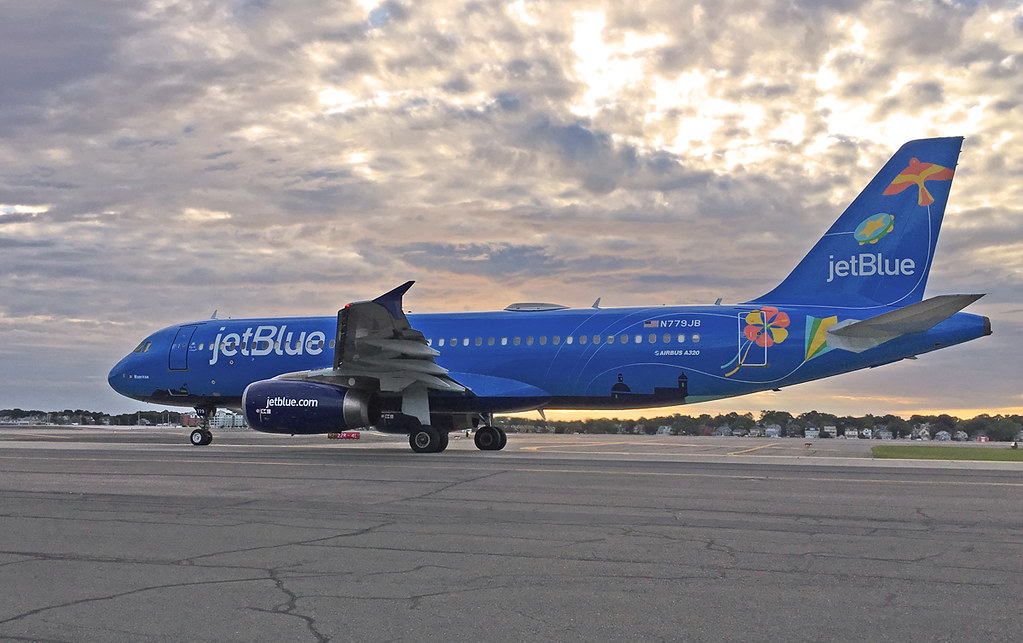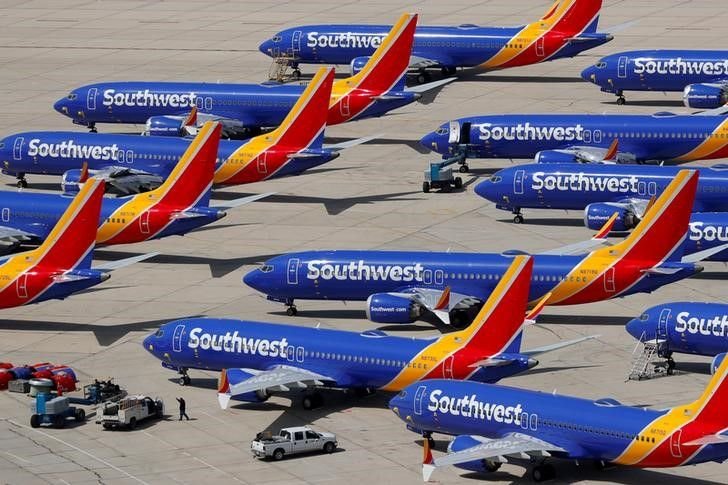Putting the new 2021 Aston Martin DBX through a back road test drive and review!

TOMORROWS TRANSPORTATION NEWS TODAY!
Putting the new 2021 Aston Martin DBX through a back road test drive and review!

JetBlue (NASDAQ: JBLU) today announced that starting May 4 all customers will be required to wear a face covering during travel. The policy comes after the airline began requiring all crewmembers to wear face coverings while working. JetBlue has modeled its policy on the Centers for Disease Control (CDC) guidelines that indicate all individuals should wear a face covering in public to help slow the spread of the coronavirus (COVID-19).
“Wearing a face covering isn’t about protecting yourself it’s about protecting those around you,” said Joanna Geraghty, president and chief operating officer, JetBlue. “This is the new flying etiquette. Onboard, cabin air is well circulated and cleaned through filters every few minutes but this is a shared space where we have to be considerate of others. We are also asking our customers to follow these CDC guidelines in the airport as well.”
This new policy will require customers to wear a face covering over their nose and mouth throughout their journey, including during check-in, boarding, while in flight and deplaning. Customers will be reminded of this requirement before their flight via email and at the airport by both terminal signage and announcements. Small children who are not able to maintain a face covering are exempt from this requirement.
CDC guidance defines a suitable face covering as an item of cloth that should fit snugly against the side of the face, be secured with ties or ear loops, include multiple layers of fabric and allow for unrestricted breathing. The CDC recommends surgical masks and N-95 respirators be reserved for healthcare workers and other medical first responders.
Maintaining distance onboard whenever possible
Beyond face covering requirements for crewmembers and customers, since late March, JetBlue has limited the number of seats available for sale on most flights, allowing the airline to provide additional space between individuals who are not traveling together. Before each flight, JetBlue reviews seat assignments to ensure as much personal space as possible. In addition, rows near crewmember jump seats have been blocked off to create buffer zones for added crewmember and customer safety.
Safety enhancements throughout the journey
All of JetBlue’s aircraft are equipped with hospital grade high-efficiency air particulate (HEPA) filters. All recirculated air is passed through these HEPA filters before re-entering the cabin and being mixed with fresh air. All of the air in the cabin is, on average, completely changed every three minutes. HEPA filters are capable of removing 99.97 percent of particles, bacteria and viruses. To learn about how air circulates onboard JetBlue’s fleet, view this JetBlue video at https://youtu.be/Q2_C2iN-tEs.
Since the coronavirus began spreading in the United States, JetBlue has increased the rigor of its aircraft cleanings at night and between flights, using disinfectant approved to kill the coronavirus. Cleanings have been focused on the places customers and crewmembers touch the most, including seat covers, seatbelts, tray tables and armrests. Traditional food and beverage service have been adjusted onboard to limit touchpoints between crewmembers and customers. To learn about all the additional measures JetBlue has implemented visit http://blog.jetblue.com/coronavirus.

WASHINGTON (Reuters) – Southwest Airlines Co <LUV> said Monday it will complete inspections on 38 737 airplanes it acquired from foreign air carriers by Jan. 31 that may not meet all U.S. aviation safety requirements.
The planes are part of 88 pre-owned Boeing <BA> 737 aircraft Southwest bought between 2013 and 2017 from 16 foreign carriers. The speedier checks come after inspections of 39 used planes turned up previously undisclosed repairs and incorrectly completed fixes. Southwest used multiple contractors to conduct the reviews of the planes’ maintenance records when they bought the planes.
“We have a plan in place to inspect the 47 remaining aircraft, nine of which are currently in heavy checks, no later than January 31, 2020 – five months earlier than the original FAA accepted completion date of July 1,” Southwest said in a statement on Monday.
Southwest said its inspections to date “did not stem from any suspected safety concerns with the aircraft.” It added its “continuous assessment of the ongoing inspections has revealed nothing to warrant the expedited timeline” but will meet it nevertheless.
In 2018, Southwest agreed to conduct a complete physical inspection on each of these pre-owned aircraft over a two-year period after a Federal Aviation Administration (FAA) safety inspector in May 2018 discovered discrepancies in records for some of 88 aircraft.
Since then, Southwest said it has completed the nose-to-tail inspection of 41 aircraft without any findings that suggested an “adverse impact on continued safe operation.”
An Oct. 24 memo from H. Clayton Foushee, director of the FAA Audit and Evaluation Office, made public on Monday said the Southwest inspections turned up at least 30 previously unknown repairs and 42 major repairs that were found “not to meet FAA airworthiness requirements.” Some required “immediate corrective action to bring the aircraft back into compliance.”
The memo added “the data collected to date would indicate that a majority of” the planes to be inspected do not meet FAA airworthiness requirements.
The U.S. Senate Commerce Committee noted on Monday that the 2018 discovery prompted a full records review by Southwest Airlines of all 88 aircraft that found 360 major repairs previously unknown to the airline because they were not disclosed in the contractors’ initial review.
Foushee’s memo said Southwest grounded 34 planes in November 2018 for inspections. The committee said as a result some planes were grounded “for immediate maintenance to bring them into regulatory compliance as a result of these newly discovered prior major repairs.”
The FAA then sent an Oct. 29 letter to Southwest seeking additional information about the uninspected planes and questioned whether they suffered specific damage items. It also raised concerns about Southwest’s “slow pace in completing the evaluation of aircraft.”
Senate Commerce Committee Chairman Roger Wicker said in an Oct. 30 letter to the FAA that its concerns about Southwest’s used planes correspond “to concerns that have been brought to my attention by whistleblowers as part of my investigation into aviation safety.”
The committee said the FAA allowed Southwest to continue to operate these aircraft and as a result “Southwest Airlines appears to have operated aircraft in unknown airworthiness conditions for thousands of flights.”
The FAA said Monday that after receiving Southwest’s response it determined the airline has “met the requirements for immediate inspection and risk assessments on these aircraft.”
The FAA added it “is requiring more frequent updates on the progress of completing all the requirements.”
(Reporting by David Shepardson; additional reporting by Tracy Rucinski in Chicago; editing by Jonathan Oatis)

© 2024 WELCOME TO WWW.PLANESINTHEAIR.COM
Theme by Anders Noren — Up ↑